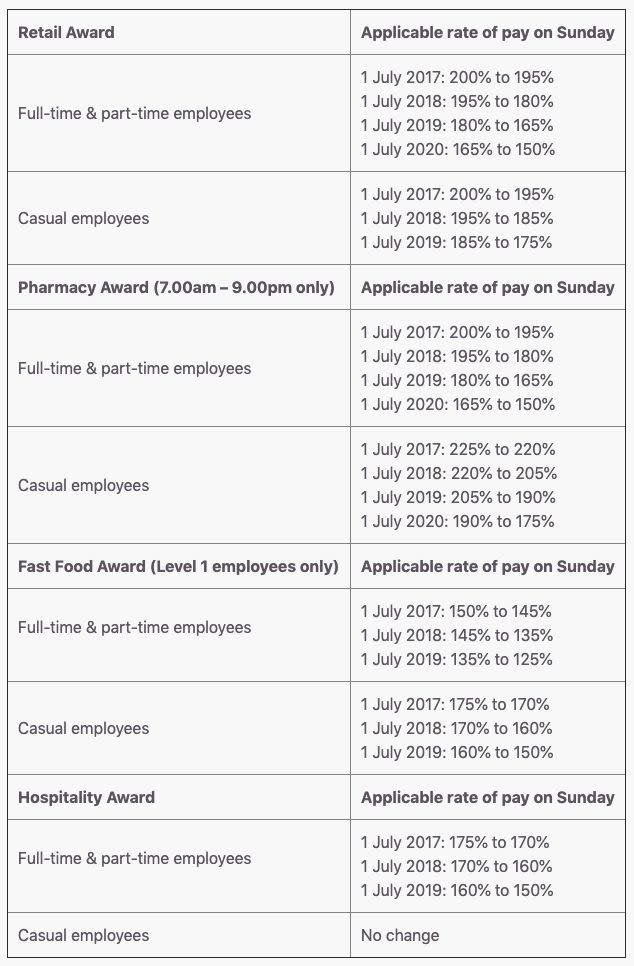ScoMo gets $11,000 pay rise on the same day penalty rates are cut

Federal MPs will see their wages lift by 2 per cent from 1 July, according to a decision made by the Independent Remuneration Tribunal.
All public offices in the Tribunals’ jurisdiction, including federal judges and public servants, will get the salary bump.
Prime Minister Scott Morrison is expected to take home $10,769 more this year on top of his current salary of $538,460.
Meanwhile, MPs and senators will see their current base salary rise from $207,100 to $211,242.
The pay rise for pollies and public servants come on the same day that weekend workers are set to see their penalty rates slashed further from 1 July.
According to United Voice, 700,000 retail and hospitality workers will have their pay cut, with many to lose more than $2,000 a year for their work on Sundays and public holidays.
“The economy is tanking, wage growth is at historical lows but the Prime Minister and his Cabinet mates will rake in a sizeable pay rise on 1 July,” said United Voice secretary Jo-Anne Schofield.
“Meanwhile, retail and hospitality workers are having real difficulties putting food on the table or meeting their utility and medical bills from week to week as they face yet another round of penalty rate cuts.
“Working people need jobs that are secure and pay them fairly – not more cuts that stop them from being able to pay for life’s essentials.”
Related story: Who actually supports penalty rate cuts for workers?
Related story: The new minimum wage: Everything you need to know
Related story: Australia, we’re in an ‘income recession’: Here’s what that means
Here’s a look at how penalty rates will change over the next two years:

Justification for penalty rate cuts is ‘is just a lie’: Economist
The Australia Institute’s Centre for Future Work chief economist Jim Stanford said wages for retail and hospitality workers were falling at a time when higher wages were needed, not lower.
“Consumer spending is growing at its weakest pace since the global financial crisis,” he said.
“These continued reductions in penalty rates will just make things a little bit worse – because hundreds of thousands of Australian workers will have a little less money in their wallets.”
The 2017 move to cut penalty rates was justified by promises that lower wages would mean more jobs and longer hours of work, he added.
“But two years of evidence have decisively disproven that promise,” Stanford said.
“These two sectors have created far few jobs than other sectors where penalty rates were not cut. The retail sector in particular has one of the worst job-creation records of any sector – creating just 100 new jobs in 21 months after the first penalty rate reductions.
“The claim that lower wages will lead to more jobs is just a lie.”
Wage growth to ‘increase gradually’
The Tribunal reviews remuneration decisions for public servants in its jurisdiction every year.
In a statement on Thursday, the Tribunal said it had factored in “a range of economic considerations, historical and projected” in its decision.
“The Tribunal notes that various indicators predict that wage growth is expected to increase gradually, lagging economic growth,” it said.
“Wage growth has increased modestly over the past year, with reliable measures indicating private sector wage growth is now equalling or outpacing the public sector.”
–with AAP
Make your money work with Yahoo Finance’s daily newsletter. Sign up here and stay on top of the latest money, property and tech news.

 Yahoo Finance
Yahoo Finance 
